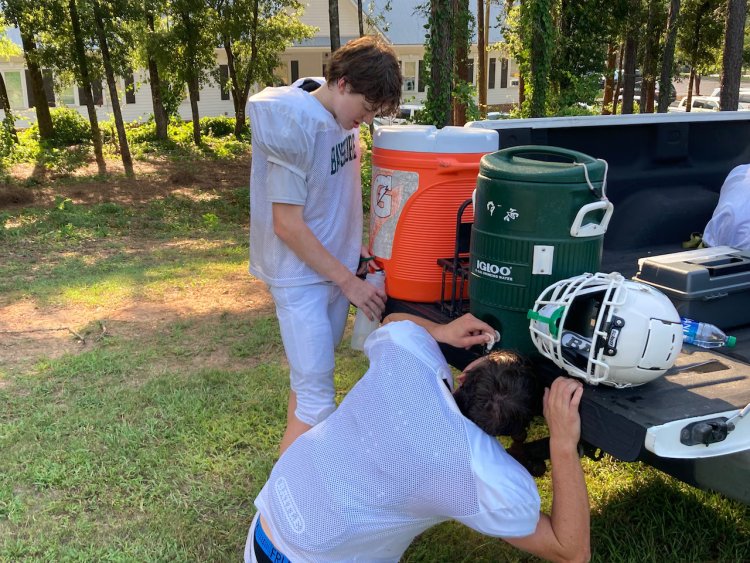High School Football Coaches and Trainers Navigate Intense Heat Index During Practices
Discover how high school football coaches and trainers in Alabama manage practice sessions amidst extreme heat, ensuring player safety with strategic measures and AHSAA guidelines.

Elba High School's head football coach, Marc Sieving, and his team enjoyed a rare respite from the scorching summer heat during Monday’s practice, thanks to a breeze brought by Hurricane Debby.
"Yesterday, it was really nice because we got a little wind from that hurricane," Sieving said. "I told the kids that I turned the air conditioner on for them. You could tell the difference with just that little breeze. They were jumping all around."
This brief relief was a welcome break as high school football teams across the state gear up for the season's kickoff on August 22-23. With temperatures forecasted to reach the mid-to-upper 90s and some areas in Mobile and south Alabama potentially hitting 100 degrees, heat advisories were in effect for several counties in Southwest Alabama.
Heath Harmon, the new executive director of the Alabama High School Athletic Association (AHSAA), emphasized the importance of student-athlete safety in these conditions.
"Part of our mission is the health and safety of our students, and that should be a priority at the forefront of everything we do with athletics," Harmon told the Cotton State Chronicle. "It's really our expectation that local school administrations and coaches make the best decisions regarding the heat to keep their athletes safe."
The AHSAA has established specific guidelines for practicing in extreme heat, updated as of May. These guidelines are essential for coaches to ensure player safety:
- Heat index less than 91: Basic heat safety and planning.
- Heat index 91-103: Maximum practice time of 2 hours with limited equipment (helmet, shorts, and shoulder pads). All equipment must be removed for conditioning.
- Heat index 103-125: Maximum practice of 1 hour with helmets only, including 20 minutes of distributed breaks.
- Heat index greater than 126: No outdoor practice allowed.
At Spanish Fort High School, athletic trainer Rob Milam reported a heat index of 112 at 5 p.m. on Monday, which didn't drop below 103 until after 6 p.m.
Vestavia Hills coach Robert Evans detailed the adjustments his team makes to cope with extreme heat.
"We practice before school on particularly hot days and hold meetings and weight sessions in the afternoon," Evans said. "We strictly follow the AHSAA regulations and ensure our players stay hydrated with ample supplies of water, Gatorade, and protein."
Elba's coach Sieving, dealing with a smaller roster, takes extra precautions.
"We have 36 players who play both ways, so we ensure forced hydration," he said. "We see our guys five times a day, making them drink three cups of water at each meeting."
Madison Academy coach Bob Godsey emphasized the importance of hydration and preparation.
"We're very in tune with the heat and rely on our preparation from the spring and summer," Godsey said. "We educate players on hydration, rest, and nutrition before, during, and after practice."
At Spanish Fort, Milam constantly monitors temperatures, providing frequent water breaks, ice baths, cooling stations, and tents with misters to keep players safe.
With the NOAA’s Climate Prediction Center forecasting a 50-60% chance of hotter-than-average temperatures for August, coaches like Bayshore Christian’s Phil Lazenby, with over 25 years of experience, remain vigilant.
"You have to watch them closely," Lazenby said. "You know when they are acting normal and when they are not. We give them plenty of breaks to ensure safety."
Pisgah coach Luke Pruitt keeps his team acclimated to the heat, emphasizing the importance of focus and preparation despite external factors.
"We tell them to come to work every day and not let uncontrollable factors affect their practice and preparation," Pruitt said.







